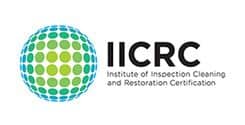Floods are one of the most common and destructive natural disasters, causing significant damage to homes, businesses, and infrastructure. When a flood occurs, it is crucial to assess the damage quickly and accurately to determine the necessary repairs and restoration efforts. This article will guide you through the step-by-step process of flood damage assessment, ensuring that you have a comprehensive understanding of the process and can make informed decisions about your property's recovery.
Step 1: Ensure Safety
Before beginning the flood damage assessment process, it is essential to ensure that the affected area is safe to enter. This may involve turning off electricity and gas supplies, wearing protective gear such as gloves and boots, and checking for any structural damage that may pose a risk. If you are unsure about the safety of the area, it is best to consult with a professional.
Step 2: Document the Damage
Once the area is safe to enter, begin documenting the damage. This includes taking photographs and videos of the affected areas, as well as making notes about the extent of the damage. Be sure to capture images of any standing water, damaged walls, floors, and ceilings, as well as any damaged personal belongings. This documentation will be crucial when filing insurance claims and working with restoration professionals.
Step 3: Identify the Source of the Flood
Identifying the source of the flood is essential in determining the appropriate course of action for restoration. Floods can be caused by a variety of factors, including heavy rainfall, burst pipes, or sewer backups. Once the source has been identified, take steps to address the issue and prevent further damage. This may involve contacting a plumber or other professional to repair the problem.
Step 4: Determine the Category of Water Damage
There are three categories of water damage, each with varying levels of contamination and potential health risks. Category 1 water damage is caused by clean water sources, such as a burst pipe or overflowing sink. Category 2 water damage, also known as greywater, contains contaminants and can cause illness if ingested. This type of water damage typically comes from sources like washing machines, dishwashers, or toilet overflows with urine. Category 3 water damage, or blackwater, is highly contaminated and can cause severe illness or death if ingested. This type of water damage is typically caused by sewage backups or flooding from natural disasters. Determining the category of water damage will help you understand the necessary steps for cleanup and restoration, as well as any potential health risks.
Step 5: Assess Structural Damage
Floodwaters can cause significant structural damage to a building, including weakened foundations, damaged walls, and compromised support beams. Carefully inspect the affected areas for signs of structural damage, such as cracks, bulging, or sagging. If you suspect that your property has suffered structural damage, it is essential to consult with a professional engineer or contractor to determine the best course of action.
Step 6: Assess Personal Property Damage
In addition to structural damage, floods can also cause significant damage to personal belongings, such as furniture, electronics, and clothing. Carefully inspect all affected items and determine whether they can be salvaged or if they need to be replaced. Keep in mind that some items, particularly those affected by contaminated water, may pose health risks and should be discarded.
Step 7: Develop a Restoration Plan
Once you have assessed the extent of the flood damage, it is time to develop a restoration plan. This plan should outline the necessary steps for repairing structural damage, removing water and moisture, cleaning and sanitizing affected areas, and restoring or replacing damaged personal belongings. Depending on the severity of the damage, you may need to enlist the help of professional restoration services to ensure a thorough and effective recovery.
Step 8: Contact Your Insurance Company
After completing the flood damage assessment, contact your insurance company to file a claim. Provide them with the documentation you gathered during the assessment process, including photographs, videos, and notes. Your insurance company will likely send an adjuster to inspect the damage and determine the appropriate compensation for your claim.
Step 9: Begin the Restoration Process
With your restoration plan in place and your insurance claim filed, it is time to begin the process of repairing and restoring your property. This may involve hiring professional restoration services, contractors, or completing some tasks yourself. Be sure to follow all safety guidelines and recommendations from professionals during the restoration process.
Conclusion
Flood damage assessment is a critical step in recovering from a flood event. By following this step-by-step guide, you can ensure that you accurately assess the damage, develop a comprehensive restoration plan, and work with your insurance company to receive the compensation you need to restore your property to its pre-flood condition. Remember, safety should always be your top priority, and when in doubt, consult with professionals to ensure a successful recovery.







